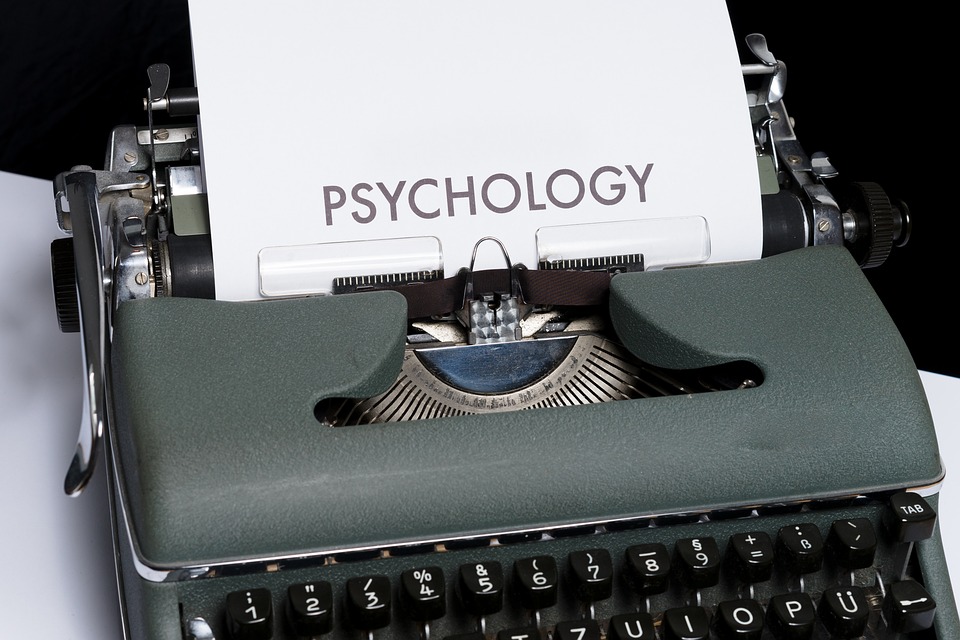
by Dr. Phil | Jan 13, 2024 | DBT Therapy
[ad_1]
Promoting Emotional Regulation: How to Foster a DBT-Focused Environment at Home
Emotional regulation is an important skill that allows individuals to effectively manage their emotions and behaviors. It is particularly crucial for individuals struggling with mood disorders, anxiety, and other mental health issues. Dialectical Behavior Therapy (DBT) is a widely recognized and evidence-based treatment approach that focuses on promoting emotional regulation. This therapy emphasizes the development of mindfulness, distress tolerance, emotion regulation, and interpersonal effectiveness skills. While DBT is commonly practiced in clinical settings, it is also possible to create a DBT-focused environment at home to support emotional regulation. Here are some tips for fostering a DBT-focused environment at home:
Cultivate Mindfulness: Mindfulness is the practice of staying present and aware in the current moment. Encouraging mindfulness within the home environment can help individuals become more attuned to their emotions and thoughts. Simple practices such as meditation, deep breathing exercises, and mindful eating can be incorporated into daily routines. Additionally, creating a calm and peaceful space within the home can support mindfulness practice.
Validate Emotions: Emotions are a natural and essential part of human experience. It is crucial to validate and acknowledge one’s own emotions as well as those of others. Creating an environment where emotions are accepted and respected can foster emotional regulation. Encourage open communication and provide a non-judgmental space for individuals to express their feelings.
Teach Distress Tolerance Skills: Distress tolerance skills are essential for managing intense emotions and crisis situations. Teaching and practicing distress tolerance skills at home can equip individuals with effective coping strategies. This may include grounding techniques, self-soothing activities, and creating a crisis plan for when emotions become overwhelming.
Create a Structured Routine: Structure and routine can provide a sense of predictability and stability, which is beneficial for emotional regulation. Establishing a consistent daily schedule can help individuals feel more in control and organized. Additionally, incorporating regular physical activity and adequate sleep can support emotional regulation.
Model and Encourage Effective Communication: Healthy communication is vital for fostering emotional regulation and building strong relationships. Model and encourage open, honest, and respectful communication within the home. Teach and practice assertiveness skills to effectively express needs and boundaries.
Provide Learning Opportunities: Educate yourself and your family members about DBT skills and practices. There are numerous resources available, including books, online courses, and workshops that can provide valuable insight into DBT. Additionally, consider seeking professional guidance from a qualified therapist who specializes in DBT.
Seek Professional Help When Needed: While creating a DBT-focused environment at home can be beneficial, it is important to recognize when professional help is warranted. If individuals are struggling with severe emotional dysregulation or mental health issues, it is essential to seek the assistance of a trained mental health professional.
In conclusion, fostering a DBT-focused environment at home can significantly support emotional regulation and overall well-being. By incorporating mindfulness, validating emotions, teaching distress tolerance skills, creating structure, promoting effective communication, providing learning opportunities, and seeking professional help when needed, individuals can develop essential skills for managing their emotions in a healthy and adaptive manner. Ultimately, promoting emotional regulation at home can contribute to a more supportive and harmonious environment for all family members.
[ad_2]
by Dr. Phil | Jan 9, 2024 | DBT Therapy
[ad_1]
Empowering Adolescents: How DBT Teaches Essential Skills and Strategies for Emotional Regulation
Adolescence is a tumultuous time for many young people as they navigate the challenges of growing up, including hormonal changes, peer pressure, and academic stress. This is a critical time for adolescents to learn how to regulate their emotions, develop healthy coping mechanisms, and build resilience in the face of life’s challenges.
Dialectical Behavior Therapy (DBT) has emerged as an effective treatment for adolescents struggling with emotional dysregulation and other mental health issues, offering a comprehensive approach to teaching essential skills and strategies for emotional regulation.
DBT was originally developed by Dr. Marsha Linehan to treat individuals with borderline personality disorder, but has since been adapted for use with adolescents who struggle with high emotions and impulsive behaviors. DBT is a multifaceted treatment that focuses on teaching four key skill sets: mindfulness, distress tolerance, emotion regulation, and interpersonal effectiveness.
Mindfulness is the practice of being present in the moment, observing thoughts and feelings without judgment. Adolescents are taught techniques such as deep breathing, meditation, and grounding exercises to help them stay centered and avoid being overwhelmed by their emotions.
Distress tolerance skills help adolescents to cope with distressing situations without resorting to impulsive acting out or self-destructive behaviors. This includes learning how to accept reality, distract from distressing thoughts, and self-soothe in healthy ways.
Emotion regulation skills teach adolescents how to identify and label their emotions, understand the function of their emotions, and change their emotional responses when necessary. Adolescents learn to challenge irrational beliefs and use coping strategies to regulate their emotions in healthy ways.
Interpersonal effectiveness focuses on teaching adolescents how to communicate assertively, set boundaries, and maintain positive relationships with others. This includes learning how to express emotions, make requests, and say no when necessary.
By teaching these essential skills and strategies, DBT empowers adolescents to take control of their emotions, make healthier choices, and develop the resilience needed to face life’s challenges. This comprehensive approach addresses the underlying issues contributing to emotional dysregulation, helping adolescents to build a solid foundation for long-term emotional well-being.
In addition to the skills training component, DBT also incorporates individual therapy, group therapy, and coaching to support adolescents in applying these skills in their day-to-day lives. The therapist acts as a coach, helping adolescents to navigate challenges and reinforce the skills they have learned.
Overall, DBT offers a holistic and effective approach to empowering adolescents to build emotional regulation skills. By learning to be mindful, tolerate distress, regulate emotions, and navigate interpersonal interactions, adolescents can develop the tools necessary to lead healthy and fulfilling lives. As the challenges of adolescence continue to evolve, DBT remains a valuable resource for empowering adolescents to develop the essential skills and strategies for emotional regulation.
[ad_2]
by Dr. Phil | Dec 14, 2023 | DBT Therapy
[ad_1]
In today’s fast-paced world, it’s easy to become overwhelmed with the demands and stresses of everyday life. From work deadlines to family responsibilities, it can be challenging to manage our emotions in a healthy and productive way. This is where Dialectical Behavior Therapy (DBT) comes in. DBT offers a variety of techniques to help individuals regulate their emotions and improve their overall well-being.
DBT was developed by psychologist Marsha Linehan in the late 1980s and has since gained recognition for its effectiveness in treating various mental health issues, particularly those related to emotional dysregulation. The therapy combines aspects of cognitive-behavioral therapy (CBT) with mindfulness practices, and it’s particularly helpful for individuals with borderline personality disorder, as well as those who struggle with intense emotions and impulsive behaviors.
One of the key components of DBT is emotional regulation, which focuses on helping individuals identify and manage their emotions in a healthy way. Here are some of the powerful techniques that DBT offers to help individuals master emotional well-being:
1. Mindfulness: DBT places a strong emphasis on mindfulness, which involves being fully present in the moment and observing one’s thoughts, feelings, and sensations without judgment. By practicing mindfulness, individuals can become more aware of their emotions and learn to respond to them in a more balanced and thoughtful manner.
2. Emotion Regulation Skills: DBT teaches a variety of practical skills to help individuals better understand and regulate their emotions. These skills include identifying and labeling emotions, understanding the causes of emotions, and learning how to change or cope with them.
3. Distress Tolerance: In addition to regulating their emotions, individuals may also benefit from learning how to tolerate distressing emotions without resorting to destructive behaviors. DBT provides strategies for managing distress in healthy ways, such as through self-soothing techniques and distraction methods.
4. Interpersonal Effectiveness: Building healthy relationships and communicating effectively with others is essential for emotional well-being. DBT teaches individuals how to assert their needs, set boundaries, and resolve conflicts in a constructive manner.
Mastering emotional well-being through DBT’s techniques takes time and practice, but the results can be life-changing. By learning to regulate their emotions more effectively, individuals can experience greater stability, resilience, and overall mental and emotional health.
It’s important to note that while DBT techniques can be beneficial for many people, they are best utilized with the guidance of a trained therapist. If you are struggling with emotional dysregulation, consider seeking out a therapist who specializes in DBT to learn more about how these techniques can help you improve your emotional well-being.
In conclusion, mastering emotional well-being is a journey that requires dedication and effort, but with the help of DBT’s powerful emotional regulation techniques, individuals can gain the tools they need to overcome their emotional struggles and live a more balanced and fulfilling life.
[ad_2]

by Jason Ward | Aug 20, 2023 | DBT Therapy
[ad_1]
DBT, also known as Dialectical Behavior Therapy, is a proven treatment approach that has been immensely effective in enhancing emotional regulation and reducing self-destructive behaviors. Originally developed by Marsha M. Linehan in the late 1980s, DBT combines elements of cognitive-behavioral therapy with concepts from Eastern philosophy, creating a unique approach to understanding and managing emotional distress.
Emotional regulation is the ability to effectively manage and respond to our own emotions in a healthy and productive manner. It is a skill that many individuals struggle with, particularly those who have experienced trauma, have a history of self-harm, or suffer from chronic mental health conditions such as borderline personality disorder.
One of the core components of DBT is the emphasis on regulating emotions through various strategies and techniques. These include mindfulness practices, distress tolerance skills, emotion regulation strategies, and interpersonal effectiveness skills. By utilizing these tools, individuals can gain a deeper understanding of their emotions and develop healthier ways of responding to them.
Mindfulness, for instance, plays a pivotal role in DBT. By bringing awareness to the present moment without judgment, individuals learn to observe their emotions without becoming consumed by them. This allows for a more objective evaluation of the situation and a less impulsive response. With consistent practice, individuals can strengthen their ability to stay present and cultivate a greater sense of self-control over their emotions.
Another crucial aspect of DBT is distress tolerance skills. These skills provide individuals with effective coping mechanisms to manage intense emotions and situations that they cannot change or control. Distress tolerance skills teach individuals to soothe themselves, distract from distress, improve the moment, and compare pros and cons of destructive behaviors. By utilizing these skills, individuals become better equipped to handle overwhelming emotions without resorting to harmful behaviors.
Furthermore, DBT helps individuals develop emotion regulation strategies. These strategies involve learning to identify, understand, and effectively manage emotions. With the guidance of a trained therapist, individuals can explore the origins of their emotions, the triggers that exacerbate them, and the patterns that perpetuate them. Through this process, individuals learn healthy coping mechanisms and eventually achieve greater emotional stability.
Finally, DBT places great importance on interpersonal effectiveness skills. These skills focus on enhancing communication, assertiveness, and problem-solving abilities in relationships. By developing these skills, individuals can navigate conflicts and express their needs and boundaries effectively, which ultimately leads to more fulfilling and healthier relationships.
Unleashing the power of DBT in enhancing emotional regulation requires commitment, effort, and consistency. It is not a quick fix, but rather a long-term investment in one’s emotional well-being. However, the rewards are significant. Individuals who undergo DBT often experience decreased emotional dysregulation, improved relationships, and an overall increase in their quality of life.
For those seeking help in managing their emotions, DBT offers a well-rounded approach that combines practical tools with a deep understanding of human psychology. Whether someone is struggling with intense emotions due to trauma, self-destructive behaviors, or a mental health condition, DBT has shown to be a transformative therapy that empowers individuals to take control of their emotions and build a life worth living.
[ad_2]

by Dr Suresh | Jun 1, 2023 | DBT Therapy
[ad_1]
Dialectical Behavior Therapy (DBT) is a treatment method that has become highly popular in recent years. Initially developed to treat Borderline Personality Disorder (BPD), DBT is now used to address a wide range of mental health issues. It incorporates four key components – mindfulness, distress tolerance, dialectics, and emotional regulation.
To help clients develop emotional regulation skills, mental health practitioners use DBT Emotional Regulation Worksheets. These worksheets provide a step-by-step guide to managing emotions and to increase emotional resilience.
Step 1: Identify Emotions
Before you can regulate your emotions, it’s essential to be able to name and identify them. The first step of the DBT Emotional Regulation Worksheet is to identify the emotions you are currently experiencing. This includes recognizing both primary and secondary emotions. Primary emotions are the initial feelings that arise, while secondary emotions arise in response to those primary emotions.
Step 2: Analyzing Emotions
After identifying your emotions, the next step is to analyze them. This means considering the cause of each emotion and identifying the thoughts and behaviors that trigger them. This step helps you gain greater self-awareness and is integral to learning emotional regulation.
Step 3: Mindful Breathing
The third step of the DBT Emotional Regulation Worksheet is to practice mindful breathing. Mindful breathing is a mindfulness technique that involves taking deep breaths and focusing solely on the sensation of the breath. The practice of mindful breathing is critical because it helps regulate the systems in the body that are involved in the stress response.
Step 4: Opposite Action
Opposite Action is a technique that involves changing your behavior in response to the emotions you are experiencing. When you feel sad, for example, you might indulge in activities that elevate your mood, like dancing or listening to uplifting music. When you’re angry, you might take deep, calming breaths or engage in a relaxing activity like taking a bath. This technique is effective because it counteracts the impulse to engage in behaviors that could have negative consequences.
Step 5: Reality Acceptance
In certain circumstances, it’s essential to practice reality acceptance by acknowledging that the situation will not change, and accepting your emotions. Accepting emotions is not the same as condoning them or allowing them to control your actions. Instead, it means accepting the situation as it is and working to adapt accordingly.
In conclusion, DBT Emotional Regulation Worksheets are an effective tool that promotes improved emotional regulation skills. By providing a step-by-step guide, they enable clients to better manage and regulate their emotions, thereby improving their overall mental health and well-being. With practice and perseverance, the techniques in these worksheets can help clients become more resilient in the face of life’s challenges.
[ad_2]



